I have one main table and 2 tables that I left-join using "FIND_IN_SET". When I use a function such as COUNT() or SUM() I get wrong numbers!
They are totally fine when I left-join only one table.
I simplified the tables for the example:
CREATE TABLE `Beatles` (
`id` int(11) NOT NULL AUTO_INCREMENT,
`name` varchar(45) COLLATE utf8_unicode_ci DEFAULT NULL,
`age` tinyint(4) DEFAULT NULL,
PRIMARY KEY (`id`)
)
INSERT INTO `Beatles` VALUES (1,'Paul',80),(2,'Ringo',82),(3,'John',81),(4,'George',79);
CREATE TABLE `Nursery` (
`id` int(11) NOT NULL AUTO_INCREMENT,
`name` varchar(45) COLLATE utf8_unicode_ci DEFAULT NULL,
`age` tinyint(4) DEFAULT NULL,
PRIMARY KEY (`id`)
)
INSERT INTO `Nursery` VALUES (1,'David',2),(2,'Alan',3),(3,'Dan',1);
CREATE TABLE `main` (
`id` int(11) NOT NULL AUTO_INCREMENT,
`name` varchar(255) CHARACTER SET utf8 DEFAULT NULL,
`nurseryIds` text CHARACTER SET utf8,
`beatlesIds` text COLLATE utf8_unicode_ci,
PRIMARY KEY (`id`)
)
INSERT INTO `main` VALUES (1,'party','1,2','3'),(2,'joy','3','2,4'),(3,'good','4','1'),(4,'all together now','1,2,3','1,2,3,4');
I ran the query:
SELECT M.id, nurseryIds, COUNT(N.id), beatlesIds, COUNT(B.id) FROM guy_test.main M
LEFT JOIN Beatles AS B ON FIND_IN_SET(B.id, M.beatlesIds)
LEFT JOIN Nursery AS N ON FIND_IN_SET(N.id, M.nurseryIds)
GROUP BY M.id
The expected result is: (The "count()" counts the number of ids to its left)
| id | nurseryIds | COUNT(N.id) | beatlesIds | COUNT(B.id) |
|---|---|---|---|---|
| 1 | 1,2 | 2 | 3 | 1 |
| 2 | 3 | 1 | 2,4 | 2 |
| 3 | 4 | 1 | 1 | 1 |
| 4 | 1,2,3 | 3 | 1,2,3,4 | 4 |
The actual result:
| id | nurseryIds | COUNT(N.id) | beatlesIds | COUNT(B.id) |
|---|---|---|---|---|
| 1 | 1,2 | 2 | 3 | 2 |
| 2 | 3 | 2 | 2,4 | 2 |
| 3 | 4 | 0 | 1 | 1 |
| 4 | 1,2,3 | 12 | 1,2,3,4 | 12 |
What am I doing wrong? Is it something with the grouping?
